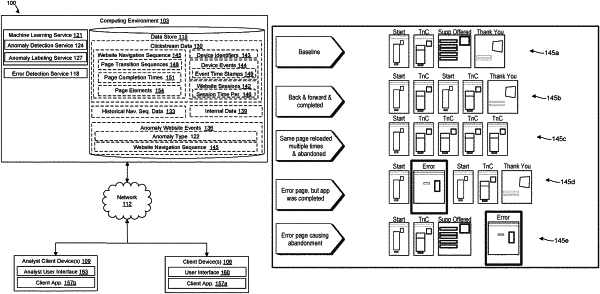| CPC G06F 11/0772 (2013.01) [G06F 11/079 (2013.01); G06F 11/0793 (2013.01); G06F 18/214 (2023.01); G06N 20/20 (2019.01); H04L 67/02 (2013.01)] | 20 Claims |

|
1. A system, comprising:
at least one computing device comprising a processor and a memory; and
machine-readable instructions stored in the memory that, when executed by the processor, cause the computing device to at least:
receive a website navigation sequence of a series of web page interactions between a client device and a website;
determine an expected completion time for a next measurement of the client device executing the website navigation sequence based at least in part on a first machine learning model being trained with historical navigation sequence data;
determine an actual completion time for the next measurement of the client device executing the website navigation sequence;
determine an anomaly website event in the website navigation sequence based at least in part on the actual completion time failing to meet a boundary threshold associated with the expected completion time; and
determine the anomaly website event is a website error based at least in part on a second machine learning model being trained with a plurality of previous website errors identified from a plurality of previous website navigation sequences.
|